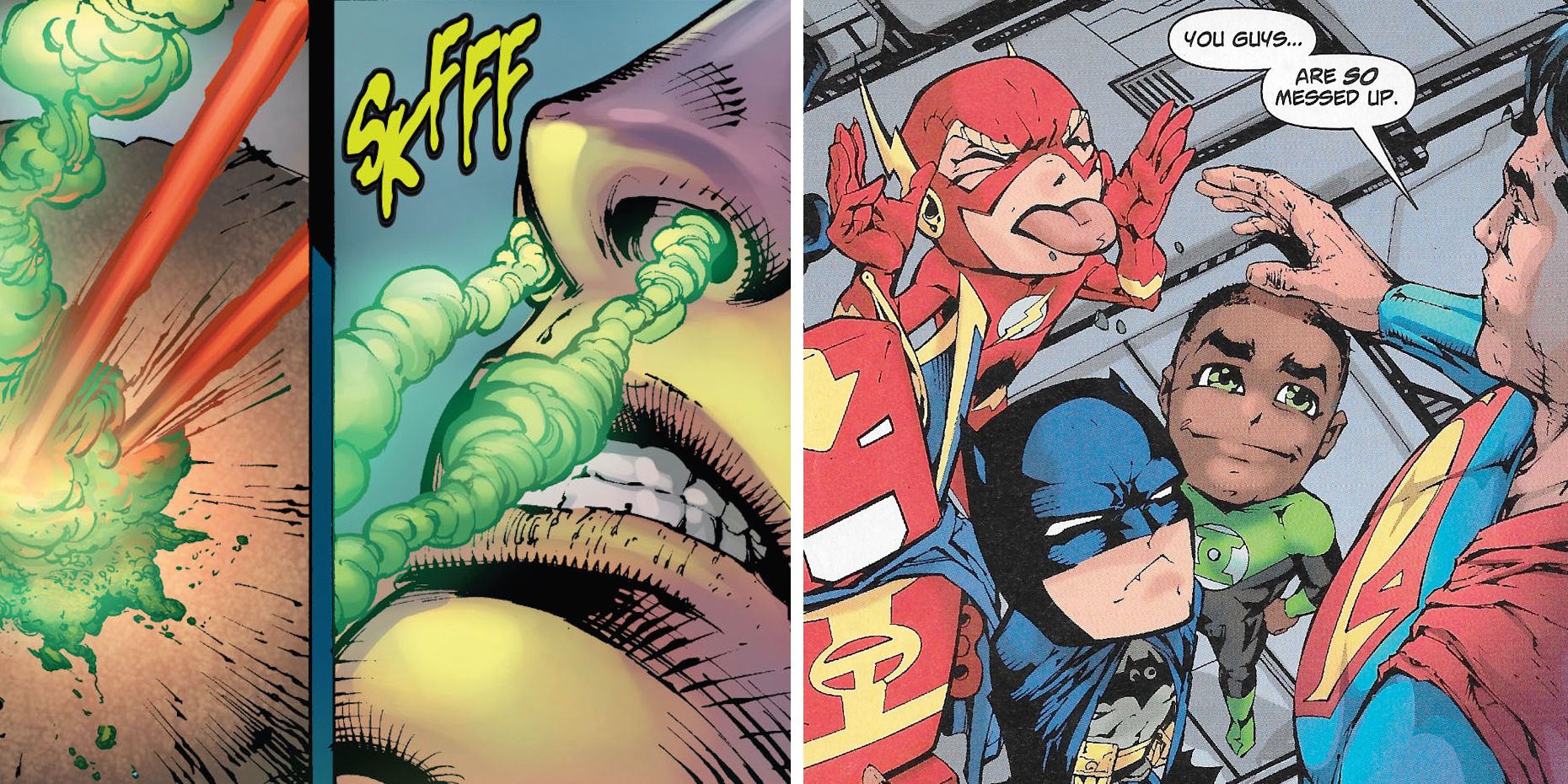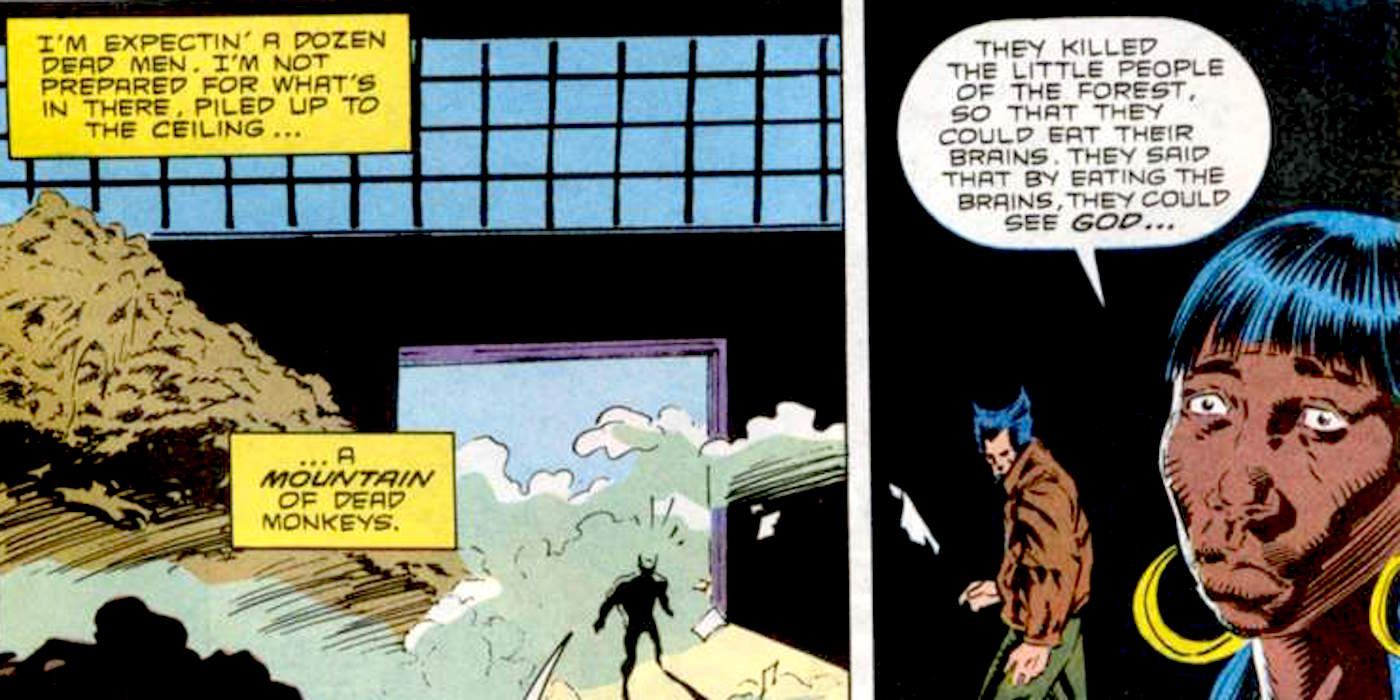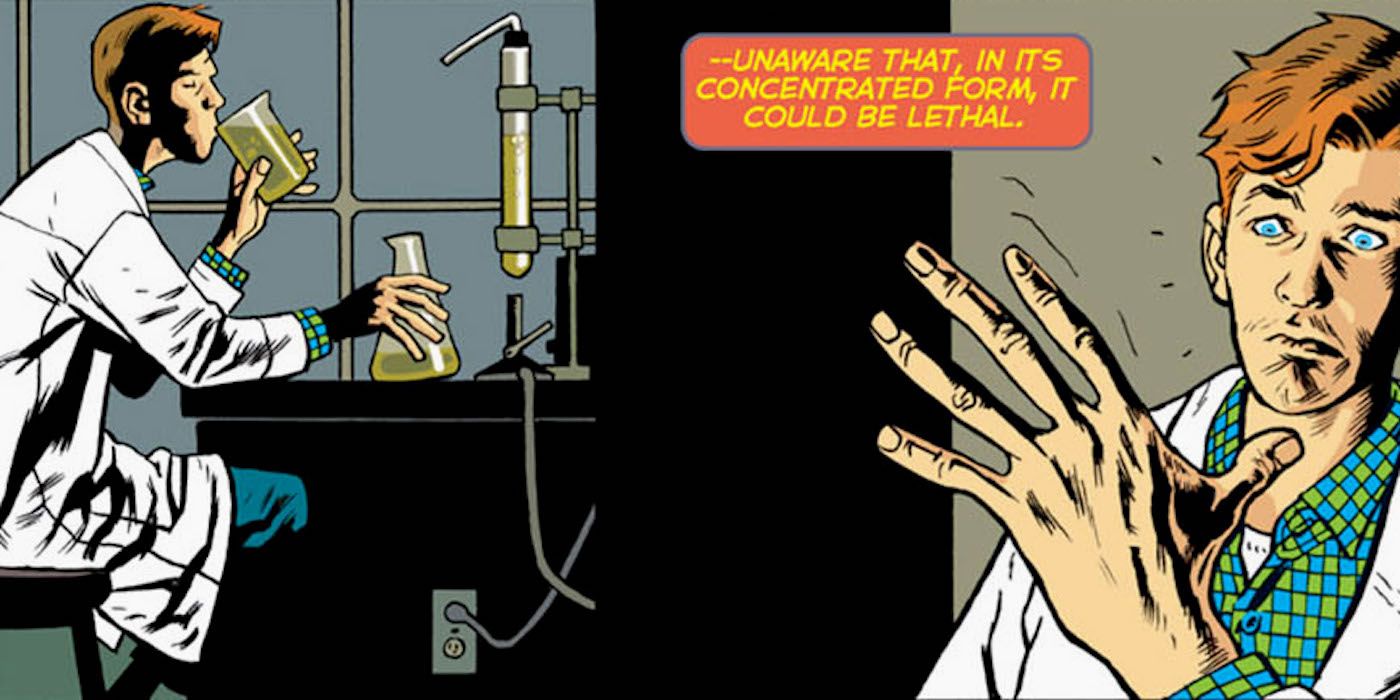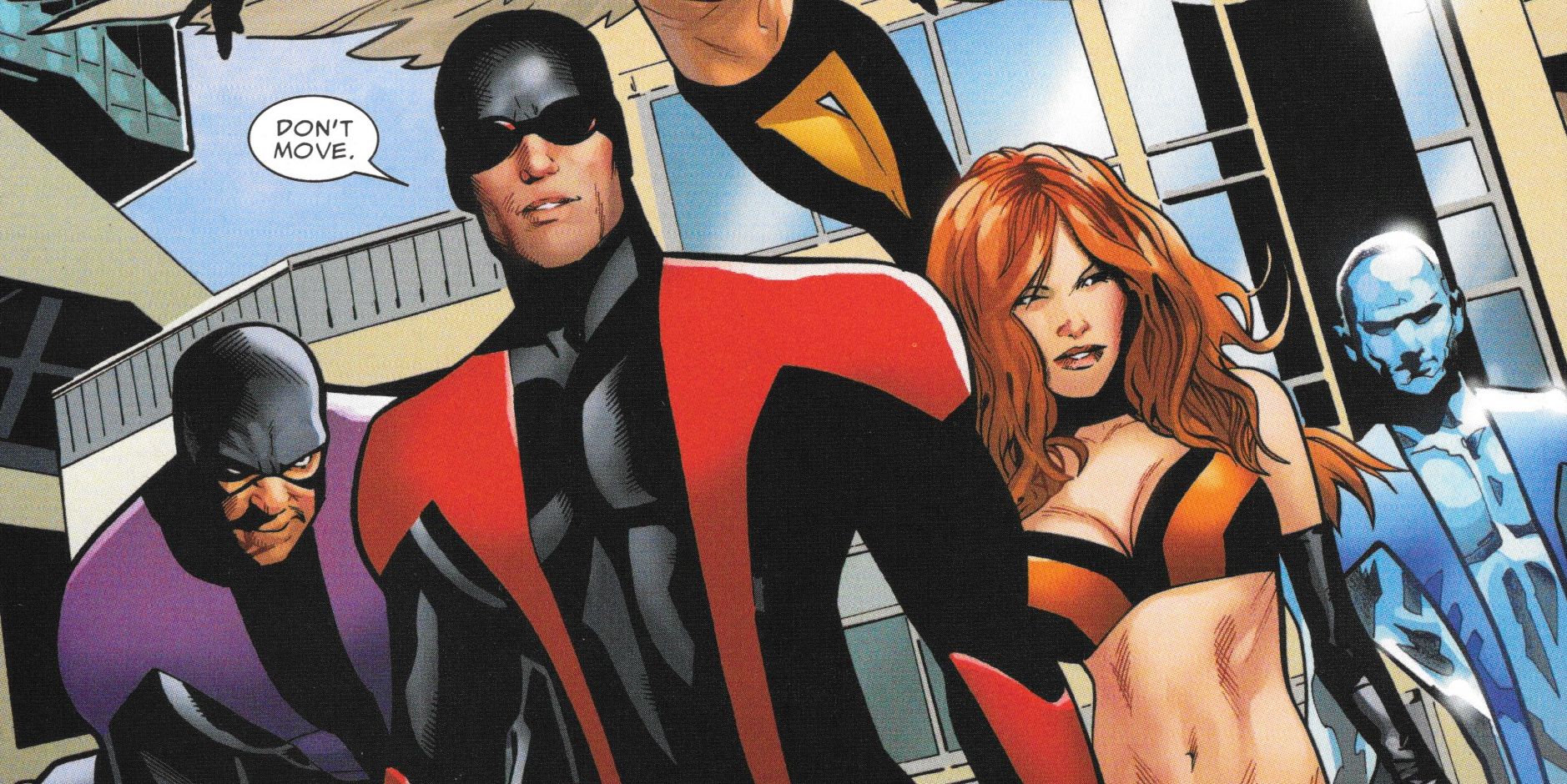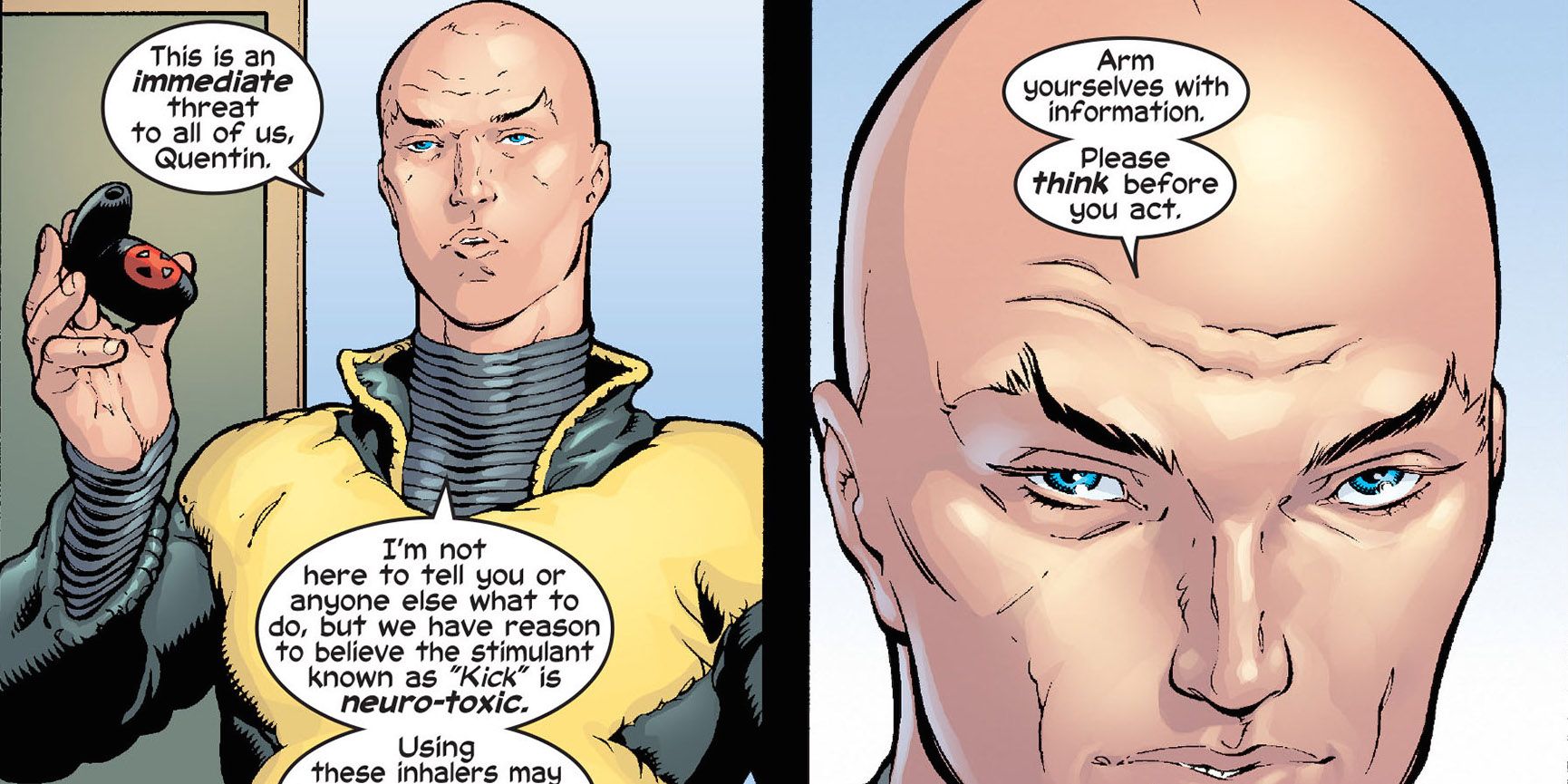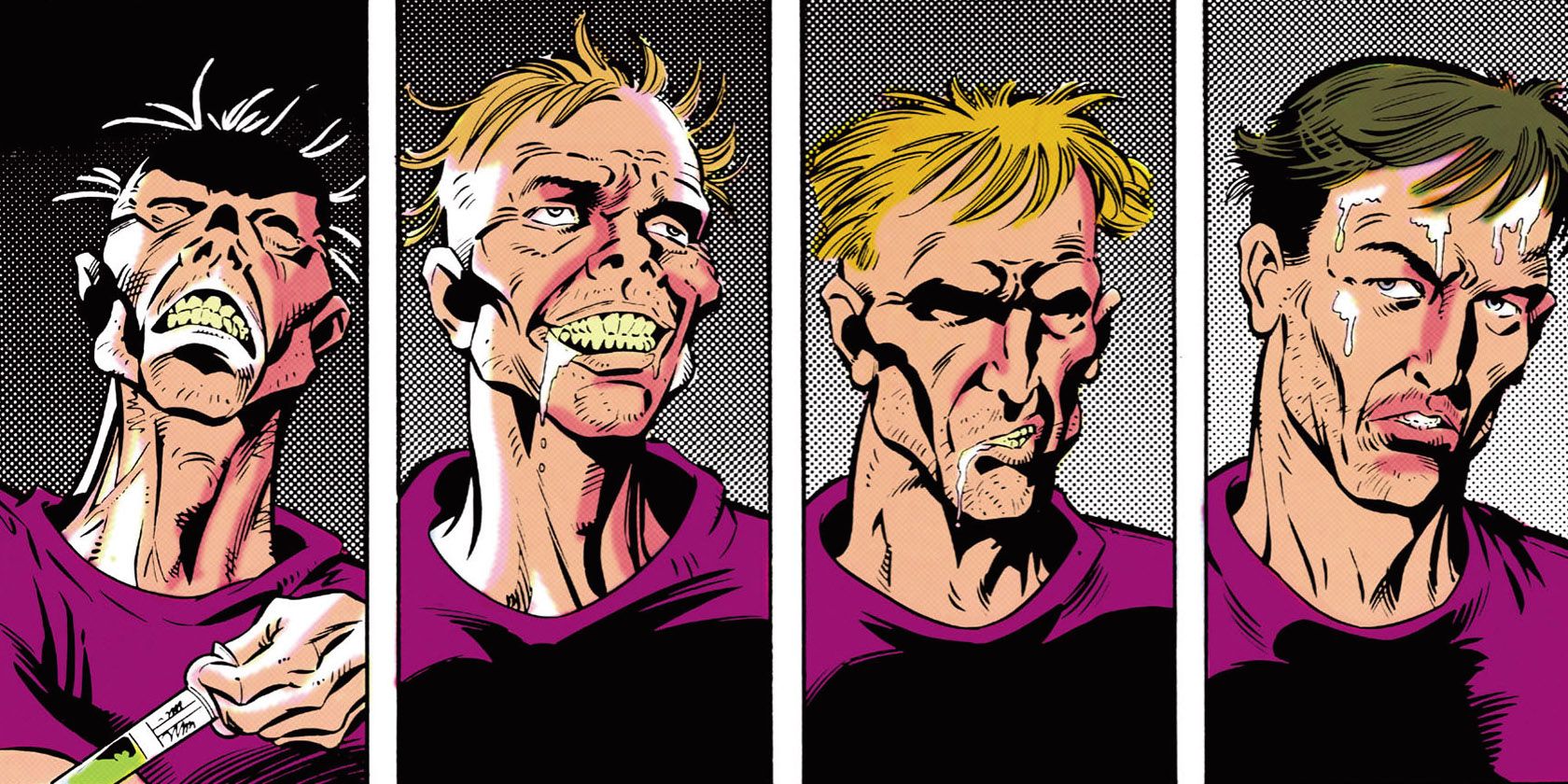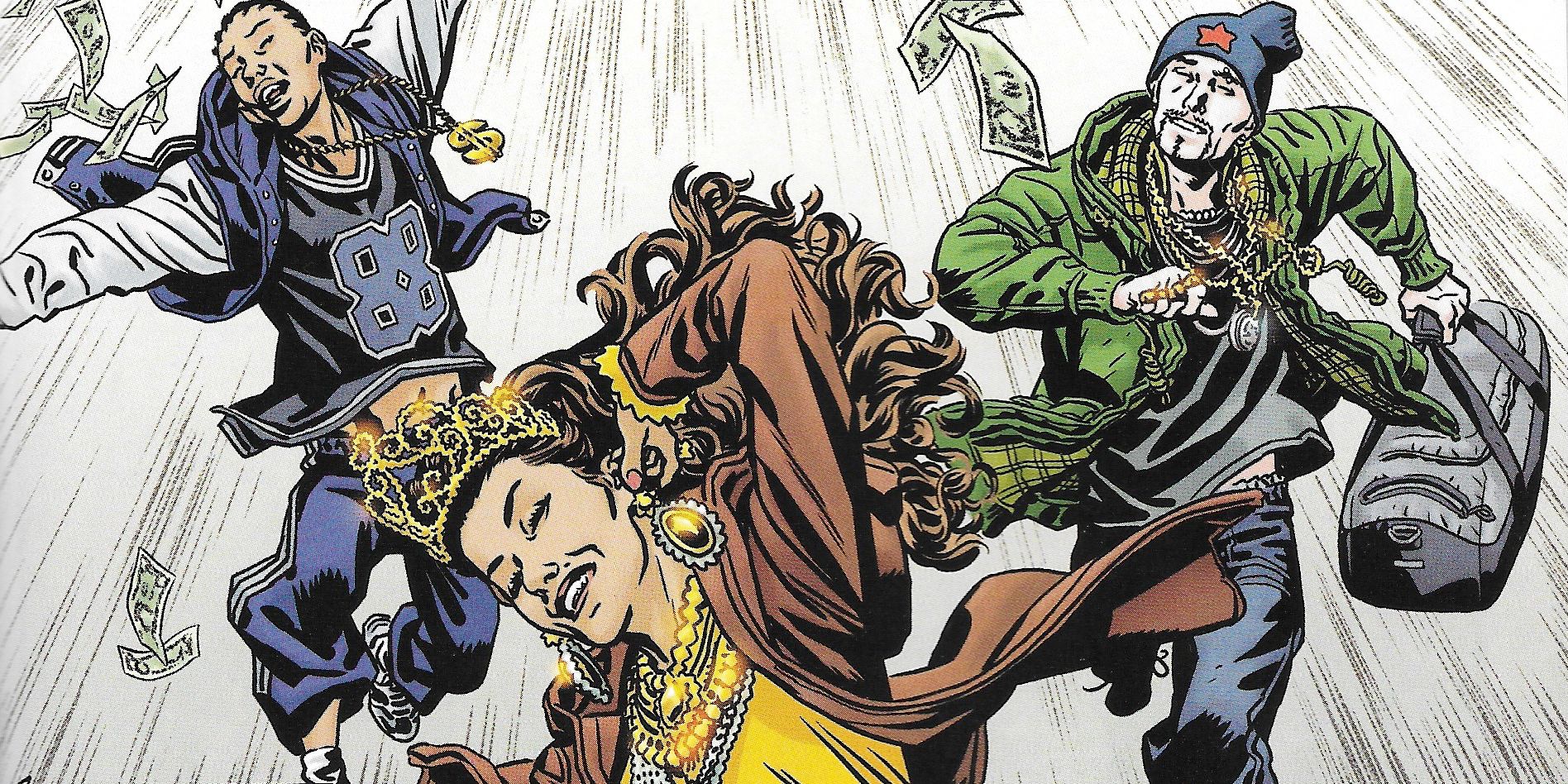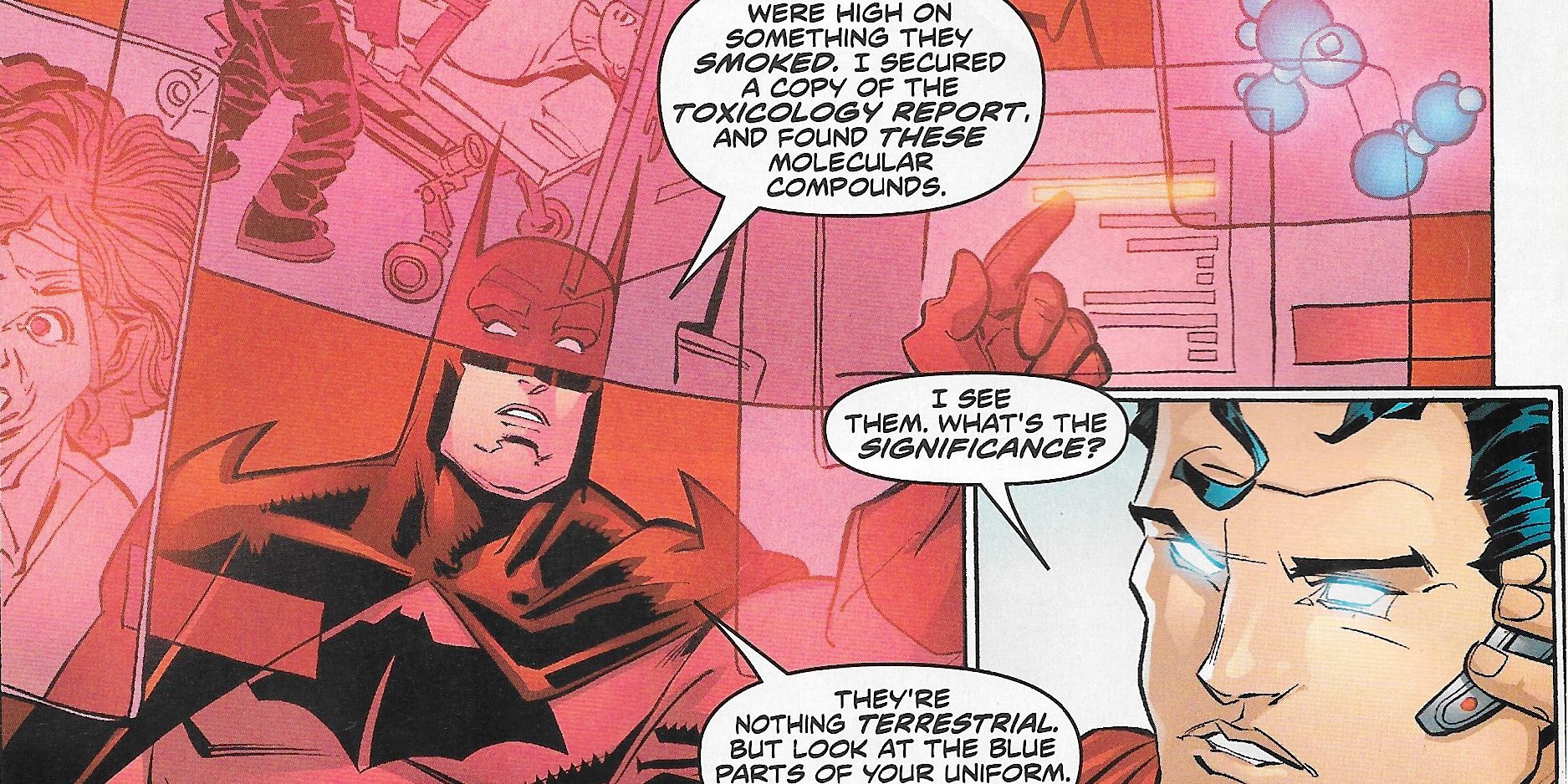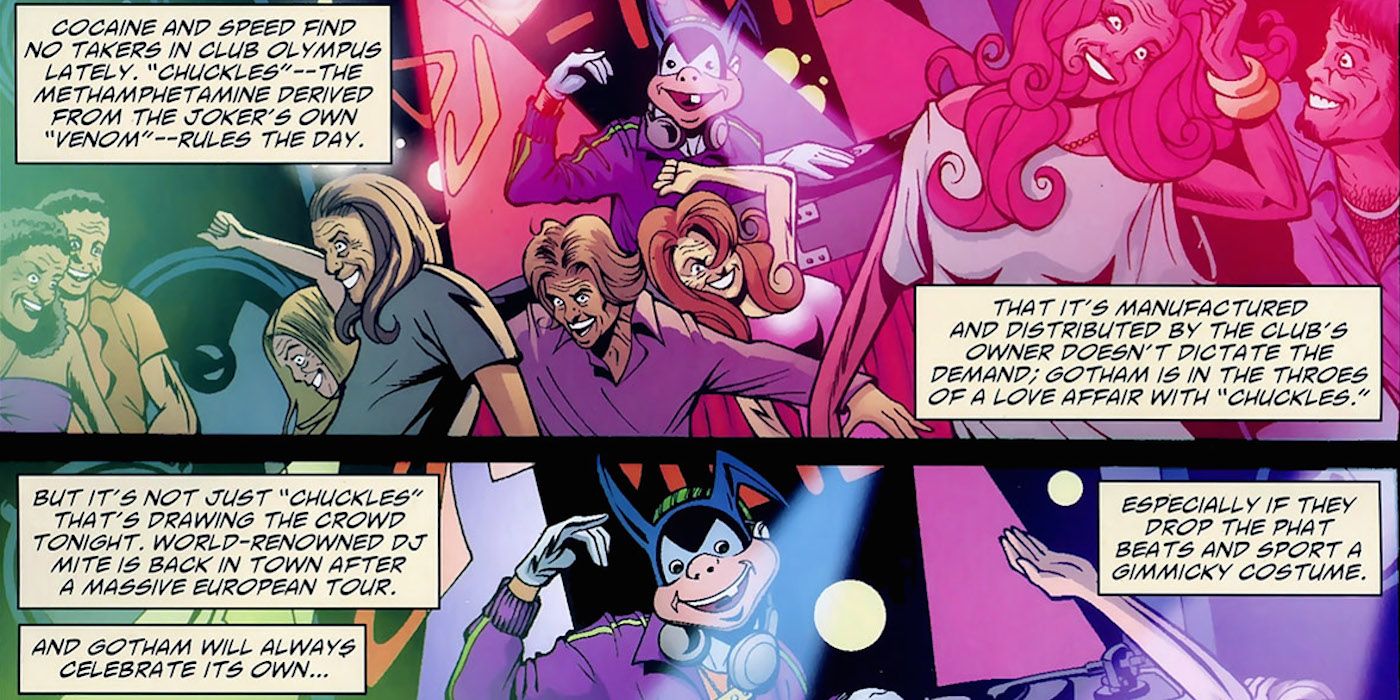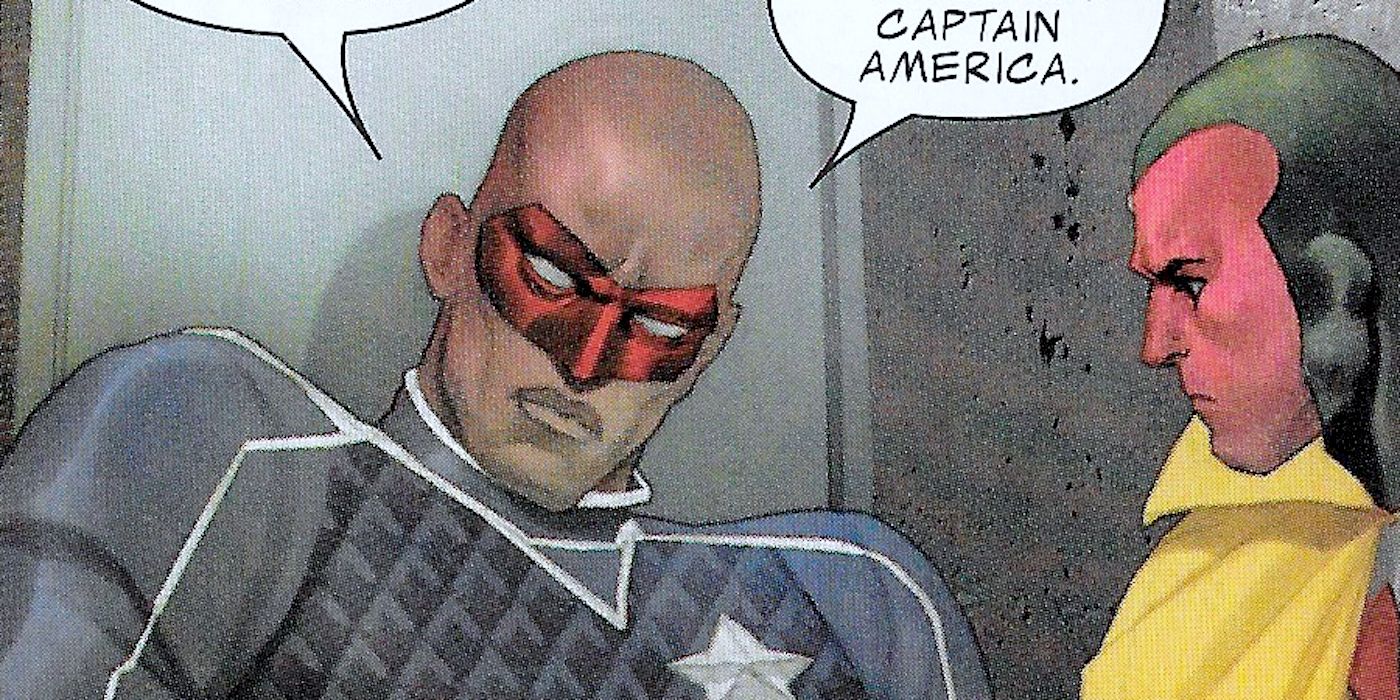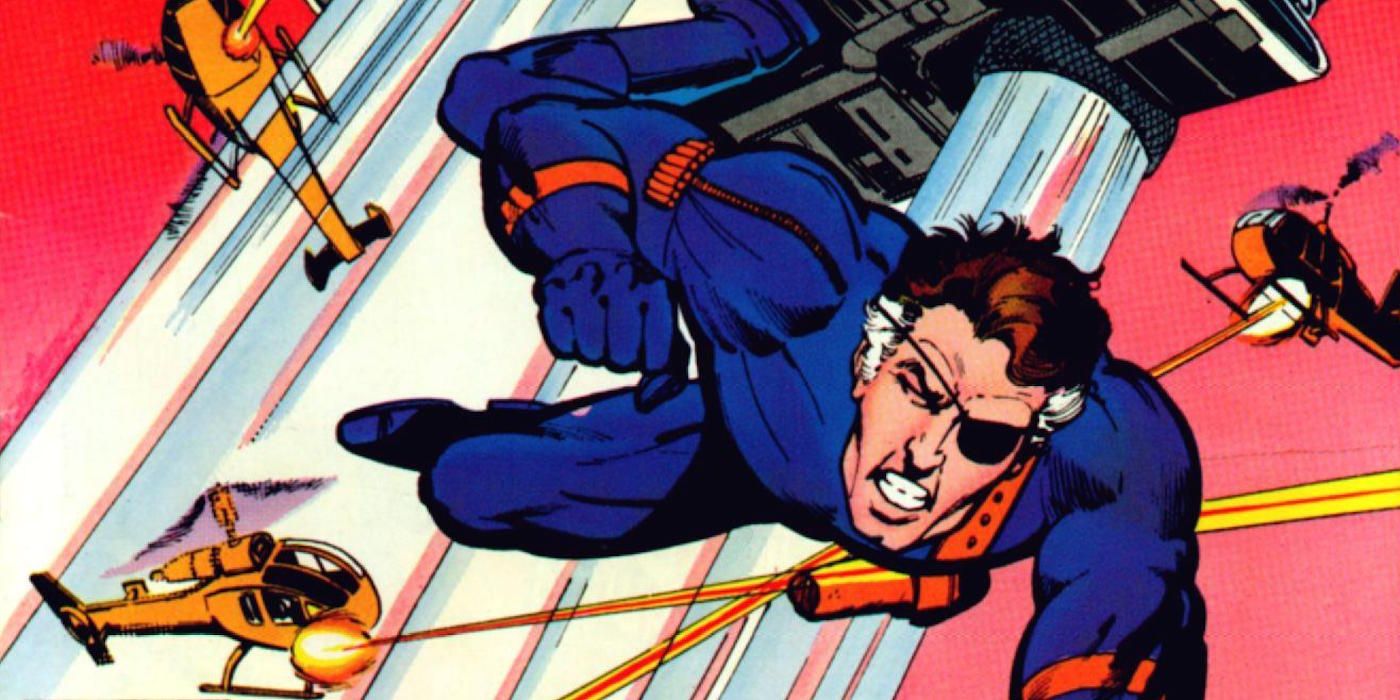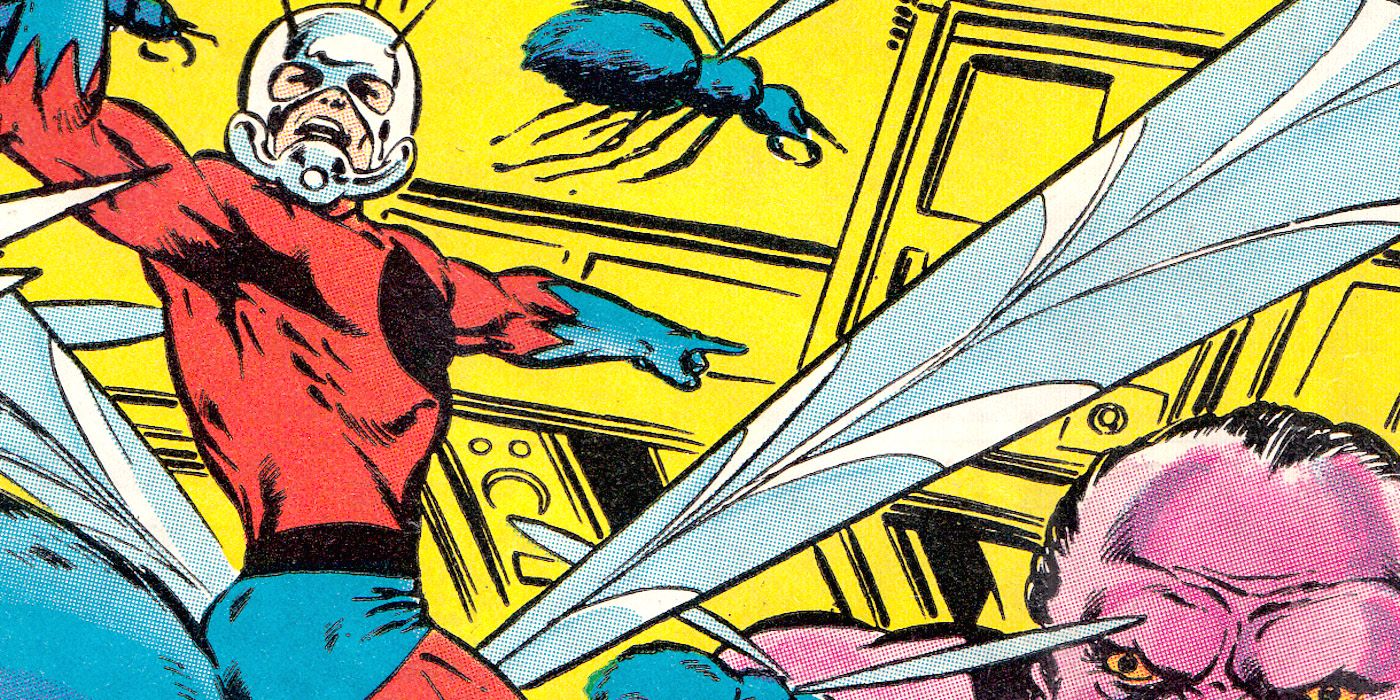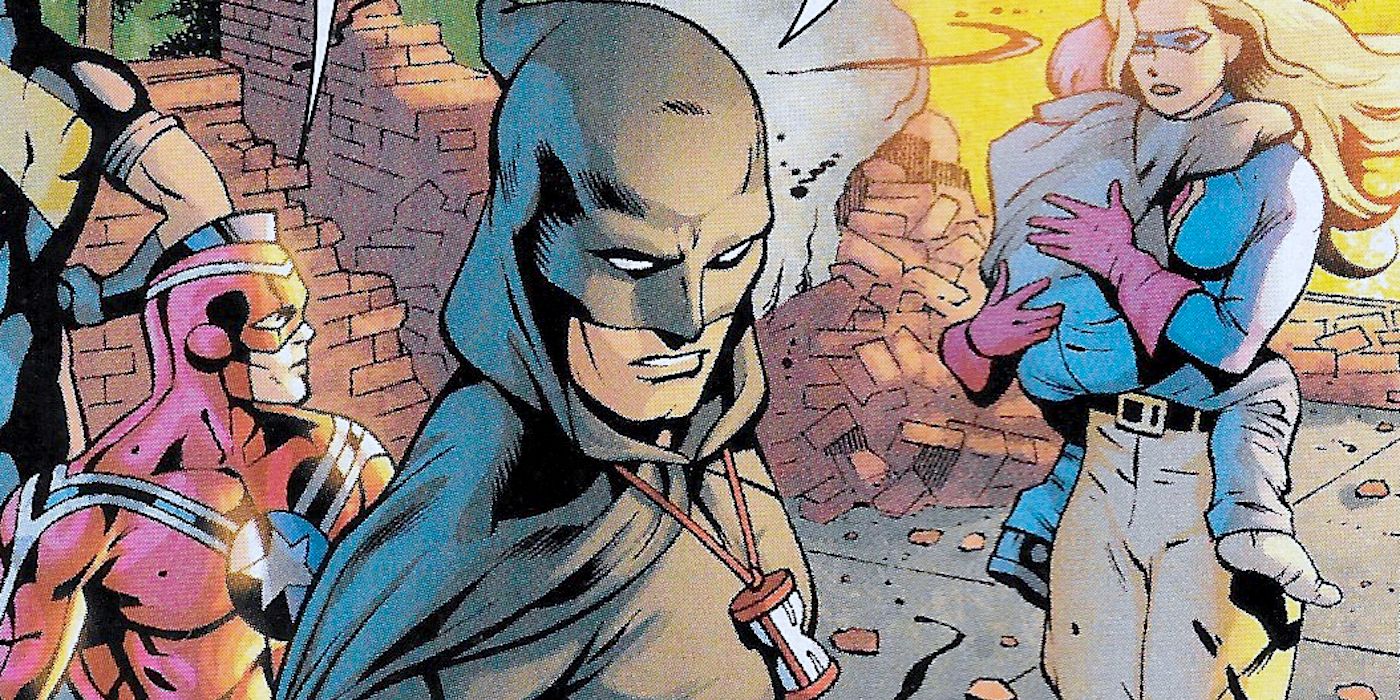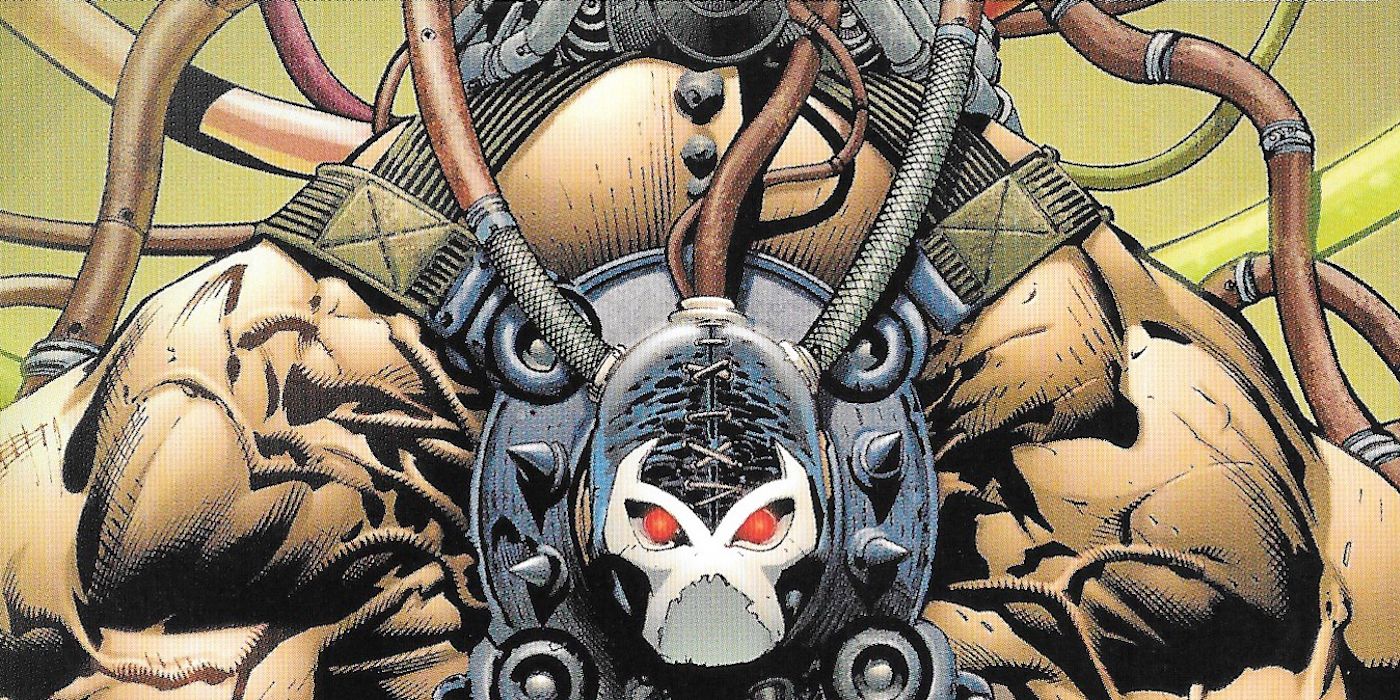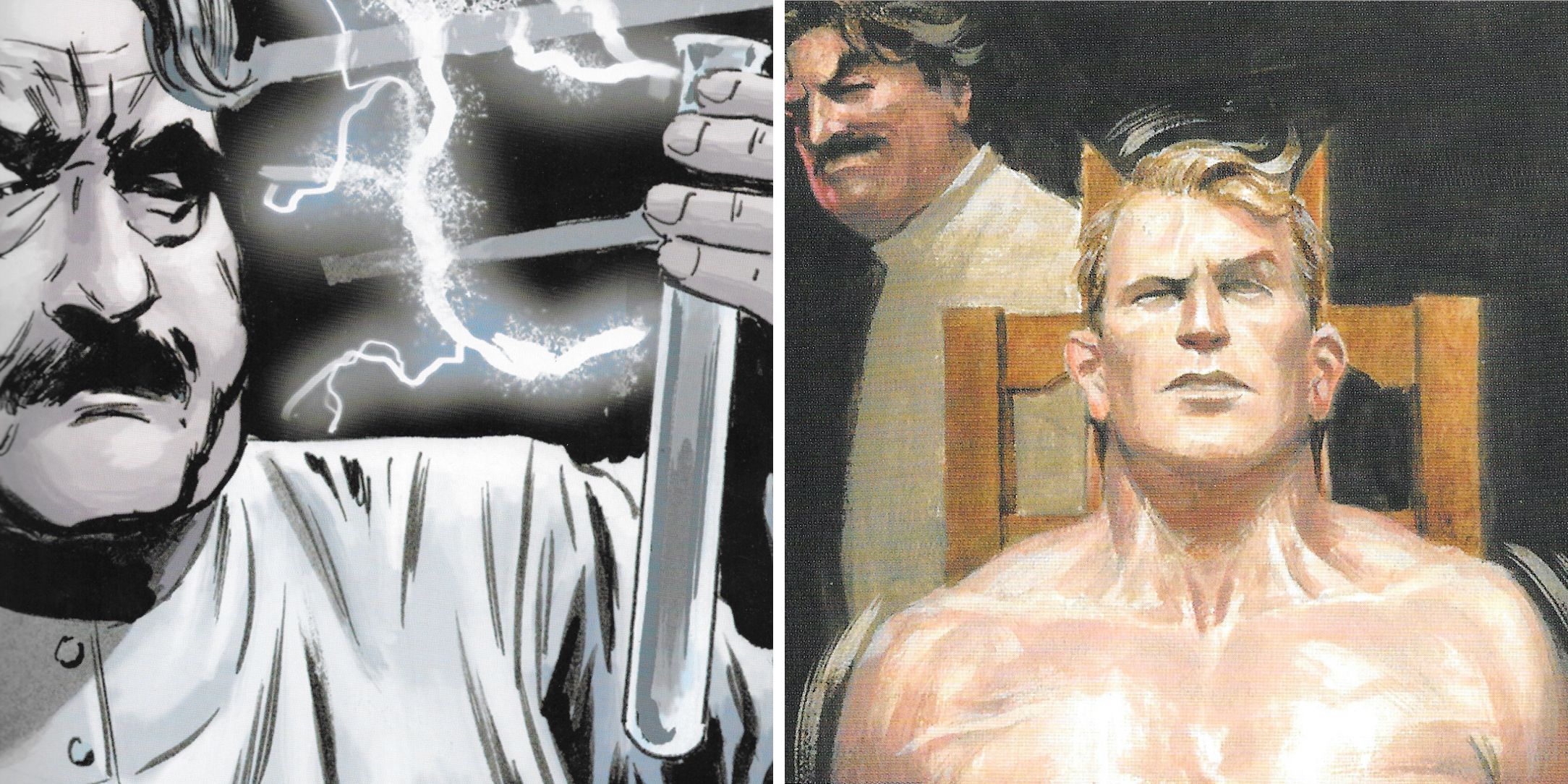Since comic books are a mirror of the concerns and issues of the day, it only makes sense that drugs would be explored regularly throughout comics history. Be it experimental pharmaceuticals or designer drugs for the party crowd, mind and body-altering chemicals are the norm in DC, Marvel and Image’s biggest titles. However, rather than using real street drugs in their stories, publishers and creators often come up with fictional substitutes for their characters to rally against…or fall victim to.
RELATED: Green Lantern: 15 Other Heroes Who Have Worn The Ring
Did you know that multiple Avengers could be considered addicts? Or that the original Hourman, Rex Tyler, is partially responsible for the creation of the Venom serum that augments Bane’s strength? In this list, we rank the 15 comic book narcotics we think are either the most interesting or have had the most impact on continuity.
15 ZAP
ZAP stands for Zootoxic Acid Psychogalvanide and it only ever appeared in three issues of “Wolverine” (#31-33) in the early ‘90s. This was during Logan’s Madripoor era when he owned a bar and went by Patch. Larry Hama (“G.I. Joe”) was writing the title at the time and he told an all-to-familiar tale of government, military and “business” interests working together to exploit the natural resources of an impoverished nation.
The active ingredient in the narcotic was the brain fluid of Madripoorian spider monkeys. The local native tribe, who partially relied on the monkeys as a food source, were forced by the army to help locate and capture the “Little People of the Forest,” as they called them. With this variety of primate already being endangered at the time, it didn’t take long until they were hunted to extinction. ZAP can be further refined into the super-drug called Thunderbolt, which gives the user enhanced strength and endurance, as well as a euphoric high. However, even one dose of Thunderbolt is lethal.
14 GINGO EXTRACT
After a childhood fascination with East Indian contortionists, Ralph Dibny figured out that Gingold soda is what many of the “rubber men” had in common. Turns out the soft drink’s key ingredient is the extract of a rare tropical fruit called Gingo. His curiosity drives Ralph to distill some Gingo himself and, upon testing it, he finds he has become super-elastic. The stretchy ginger continues to imbibe the drug and becomes the costumed sleuth known as The Elongated Man. What the young man doesn’t know at the time is that concentrated Gingo can be lethal and only his unique body chemistry allowed him to process it.
During DC's ambitious “52” (2006) event, which was shortly after Ralph’s wife, Sue Dibny, had passed away, Ralph stopped taking Gingold and halted his detective work. He became obsessed with investigating Sue’s passing and even tried to resurrect her with the help of a cult dedicate to ancient Kryptonian beliefs.
13 XPERIENCE
When a highly intelligent cyborg by the name of Lobe came onto the scene in “Uncanny X-Men” #515 (2009), it was clear he wasn’t a friend of mutantkind. His name is a not-so-subtle allusion to his enlarged dome. He was inspired by John Sublime’s goal of creating a Third Species and he set out to continue the sentient bacteria’s work, only with a commercial slant. He set up the Sublime Corporation in San Francisco to manufacture and sell a drug called Xperience that could gave human users mutant powers for a brief amount of time.
Lobe hand-picked five young, beautiful and wealthy candidates to be the Sublime Corp.'s X-Men. His team was made up of Xperience versions of the original X-Men: Cyclops, Marvel Girl, Beast, Iceman and Angel. This team did do some good, but they only did so to promote the company and its product line. The X-Men stopped this Coneheads-wannabe before he could make the drug available to the general public. However, he did manage to let a party of potential shareholders try the substance. On top of the five types mentioned above, there were also variants of Xperience that granted the powers of Wolverine, Emma Frost and Deadpool.
12 KICK
The proper name for this performance enhancer is Hypercortisone D. The drug first reared its ugly head in “New X-Men” #134 (2003) and continued to be an integral story thread for the next year of Grant Morrison’s epic run on the title. Kick users during this time included Quentin Quire and his Omega Gang, the controversial Xorn, Sophie Cuckoo and her sister Esme Cuckoo. Esme even dealt Kick at the Xavier Institute For Higher Learning. The drug enhanced mutant powers exponentially and also provided an intense mental high. Xorn was under the influence of Kick when he attacked New York City disguised as Magneto.
Now, seeing as this stimulant was a Morrison creation, you know it couldn’t simply be some kind of plant extract or synthetic narcotic. It is eventually revealed that drug is actually trace amounts of the sentient bacteria known as John Sublime packaged and sold in inhalers. Yuck!
11 VELOCITY 9
This nerve-stimulant was created by the immortal Vandal Savage to take over the New York City drug trade. It first showed up in the pages of “Flash” #12 (1988). While it granted users super-speed, the major side effect was rapid aging. Basically, it left those in withdrawal looking like zombies. Velocity 9 is an intravenously administered drug like heroin and leaves addicts craving it in much the same way. Known users include thugs Jarret Kugel and Ziggie Barnes, as well as major Flash villain Thaddeus Thawne, a.k.a. Inertia. When Wally West was injected with Velocity 9 by Savage, it negated his speed powers for a short time.
It is implied in the issue mentioned above that Velocity 9’s popularity quickly effected the sales of other narcotics in New York. As a result, drug kingpin Nick Bassaglia reacted by trying to synthesize his own. Savage thwarted his attempt, but the two crime bosses eventually formed an alliance and set their sights on the Flash.
10 MPH
Comics writer and publisher Mark Millar is a master of comic book archetypes. He tends to come up with fun (and occasionally twisted) takes on familiar superheroes and villains and then writes page-turning stories around them. Not only is his Millarworld imprint ultra successful, but also Hollywood studios can’t wait to buy up anything this guy drops.
In 2015, he gave fans “MPH,” which was clearly his spin on speedsters like The Flash and Quicksilver. In the series, he tells the story of a small-time drug dealer from Detroit named Roscoe Rodriguez who gets locked up and ends up taking a mysterious super-speed pill stamped with the letters MPH. After easily escaping prison, this speedster finds his GF and BFF and shares his small supply of pills with them. The trio add his girlfriend’s brother to their posse and go on a cross-country bank-robbing spree. However, Millar makes you empathize with these downtrodden characters and they come off like a couple of Robin Hoods as they share the wealth with Detroit’s underprivileged. The effects of MPH are similar to that of Velocity 9, but the pills have a 24-hour time limit, which also makes them more like Miraclo and Venom.
9 BOLENTHI HERB
Kal-El has many aliases other than Superman and a popular one is The Last Son of Krypton. Turns out this literal title is far from true though. On top of Supergirl, the prisoners from the Phantom Zone and the citizens of the Kandor, there are still even more Kryptonians in the DC Universe…even on Earth.
Karsta Wor-Ul was one of them. She was a soldier in Krypton’s interstellar armed forces who went AWOL. After traveling the stars, she eventually decided to call Earth home. Superman was alerted to her presence because civilians started gaining super strength and then losing their minds. Batman narrowed down the source of the physical and psychological effects to a substance that had the same molecular structure as the blue dye in Superman’s suit. When Supes tracked down the Kryptonian plant that the dye and drug were produced from, it was growing in none other than Wor-Ul’s garden. Kal explained the situation and Karsta replied that had she known the effects it would have on human beings, she would have taken more precautions. She also states that: “I smoke it myself, to relieve the pain of some old injuries and a couple of botched black market longevity treatments I’ve had over the years.”
8 CHUCKLES
Kevin Smith created this drug for his “Batman: Cacophony” (2009) miniseries. In the first issue, Floyd Lawton, a.k.a. Deadshot, explains to a locked up Joker that he is responsible for a teenager’s death. The Joker states that he rarely kills children. Then Floyd proceeds to explain that the Gotham crime boss that styles himself after a Greek god, Maxie Zeus, found a stockpile of Joker Venom and started mixing it with ecstasy to create the new recreational drug called Chuckles. The teenager in question had jumped off his school roof while high on the narcotic.
Due to its “giggly” high, it caught on in Gotham club scene and then quickly moved into the suburbs. Side effects include lockjaw, paranoia and psychosis. Floyd concludes his chat with The Clown Prince of Crime by telling him that Time Magazine called the Chuckles craze “The worst drug epidemic since crack in the late ’80s.” The Joker becomes noticeably agitated and vows to kill Zeus for making Joker Venom something to be "rocked at a kegger."
7 MGH
Mutant Growth Hormone is a drug that gives humans users powers and gives powered individuals a boost. This addictive narcotic is extracted from the genetic material of mutants and occasionally from other types of superhumans. While Daredevil villain The Owl sold MGH that he harvested from himself, others like Dazzler were victims that became sources of this narcotic against their will.
Many well known Marvel characters have fallen prey to this addictive substance and it is the focus of some of Marvel’s milestone story arcs. In the “Civil War” event in 2006, it was revealed that explosive supervillain Nitro had been under the influence of MGH during the Stamford incident. When the teenage Avengers first formed in the initial “Young Avengers” (2005) run, Patriot told his team that a blood transfusion from his grandpa Isaiah Bradley (a.k.a. the Black Captain America) had given him similar powers. In all actuality, he was taking MGH to keep up appearances and be a part of the team. MGH is officially illegal in the Marvel Universe.
6 INFINITY FORMULA
Nick Fury Sr. may not have super powers, but he has managed to stay the same age pretty much his whole comics existence. Well, let’s not beat around the bush here, it is solely due to drug use. When Marvel’s top spy was gravely injured by a landmine in France during World War II, a group of Parisians brought him to a local doctor. The man’s name was Professor Sternberg and he managed to save Fury’s life. What Sternberg didn’t mention was that he had used him as a guinea pig for a “fountain of youth” drug he had developed. Half a year later, a letter from the prof made it clear that Fury would need annual Infinity Formula inoculations to avoid ageing at a highly excelled rate. This was all recounted by the Agent of S.H.I.E.L.D. in "Marvel Spotlight" #31 (1971).
A retcon in Jonathan Hickman’s highly underrated “S.H.I.E.L.D.” (2010) miniseries credited the Brotherhood of the Shield with creating the Infinity Formula and also gave it the alternate name of "Forever Compound." It was revealed that the substance is actually a diluted variation of an even more potent life-giving serum called the Elixir of Immortality.
5 PYM PARTICLES
After the success of the "Ant-Man" feature film, most know that Dr. Hank Pym, a.k.a. Ant-Man, discovered and named “Pym particles.” These subatomic particles that first appeared in “Tales To Astonish” #27 (1962) can change the size of living beings or inanimate objects and are the basis of Hank’s superhero identity. What you may not know is that he initially had to ingest a liquid Pym Particle serum to shrink. He soon developed a gaseous version of the substance and a helmet that could administer it.
After inhaling this drug over the decades, the bodies of Hank and his partner Janet van Dyne (the Wasp) began producing their own Pym Particles. This was also true of the second Ant-Man’s daughter, Cassie Lang. Prolonged use has also been shown to cause mental instability. Fun fact: A cocktail of MGH, Dr. Connor's lizard formula and Pym Particles, plus some Gamma radiation treatment, transformed Corporal Todd Ziller into the American Kaiju.
4 MIRACLO
Rex Tyler was a scientist doing research for Bannerman Chemical when he created the performance enhancer Miraclo partially by accident. The “vitamin” pill gave the chemist a huge boost in strength and speed, but only for one hour per dose. Regardless of the time limit, Rex decided to use the drug to become the costumed hero known as Hourman in "Action Comics" #48 (1940). He was an early member of the Justice Society of America and was eventually succeeded in the role by his son Rick.
Rex continued to refine Miraclo during his crime-fighting career and each consecutive batch became equally more potent and toxic. He became addicted to the narcotic and, when Miraclo poisoning led to heart failure, he hung up the cape. Tyler also developed a variation of the pill tailor-made for his son but then forbade him to ever use it. When push came to shove however, Rick, of course, does take the pills. The Mirakuru serum in the Arrowverse is likely based on Miraclo.
3 VENOM
This is the super-steroid that gives Bane the kind of strength that puts him up there with DC's strongest human characters. Without Venom, Bane may still be large in stature, but he would not have been capable of performing his most infamous feat: breaking Batman’s back. According to Bane himself, the drug was developed by Santa Prisca’s “pharmacological super-soldier program.” The fictional island nation conducted their initial experiments with the narcotic at the Pena Duro prison where Bane was raised. He was the only test subject strong enough to survive. In most continuities, the mammoth villain wears a pump that mainlines Venom directly into his brain via tubes.
In “JSA Classified” #17 (2006), it is revealed that Venom is based on the Miraclo notes of Rex Tyler. Apparently, his former employer, Bannerman Chemicals, found and sold an incomplete version of the formula. While the Santa Priscan army couldn’t recreate Miraclo, their hybrid lasted 12 hours rather than one.
2 SUPER-SOLDIER SERUM
Many government agencies in the Marvel Universe, as well as other shady unsanctioned organizations, have attempted to create super soldiers. There are very few instances where drugs are not at least a part of the process. While you might not automatically equate Captain America’s peak human performance with a drug, that is exactly what the Super-Soldier Serum is. Though he only had to take it once to gain his superhuman abilities, Steve Rogers was the guinea pig for a dangerous pharmaceutical.
In the initial telling of Cap’s origin in “Captain America” #1 (1941), Professor Reinstein (later known as Dr. Erskine) was in charge of a secret project initiated by President Theodore Roosevelt and the F.B.I. to produce a “super-agent.” Elements of the story added later were that the program was called Project: Rebirth and that the subject must also be bombarded by Vita-Rays to stabilize the Super-Soldier Serum. The latter retcon made Steve becoming Cap more of a process and less of a steroid injection. The U.S. government also tested a flawed copy of Erskine's formula on 300 African-American soldiers in the early '40s, with only Isaiah Bradley surviving and gaining enhanced strength and speed.
1 KRYPTONITE
Even for seasoned comic readers this entry may be a surprise. In “Justice League of America” #29 (1964), writer Gardner Fox and artist Mike Sekowsky introduced the first incarnation of Superman’s evil Earth-Three doppelgänger, Ultraman. This villain with even more powers than Supes gained his abilities by absorbing Kryptonite radiation rather than yellow sun radiation. Innocent enough, right? Well, when the character debuted in the New 52, Geoff Johns made the act of attaining his powers seem like a seedy habit. Now known as Kal-Il and from a different version of Earth-3, this version tended to crush and snort Kryptonite. He even incinerates it with his heat vision and inhales the green vapor in “Forever Evil” #1 (2013). This series conveyed the sense that Ultraman is an addict.
Turns out another kind of Kryptonite is a stimulant as well. Silver Kryptonite, which is also known as magic Kryptonite, has similar effects on Kryptonians that marijuana has on humans. Superman was exposed to this variation of the mineral in "Superman/Batman" #46 (2008) and the effects included increased appetite and hallucinating chibi versions of the JLA.
Let us know in the comments if there are any other fictional narcotics used in comics that we forgot!

